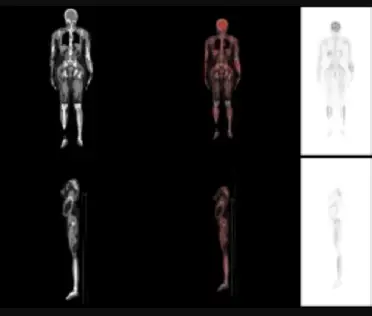New research found that a fad in how defibrillation is done may actually save lives

When a patient goes into cardiac arrest — that is, their heart stops beating — there are a few things medical workers can do:
- Chest compressions. The idea is to manually squeeze the heart, pushing blood out. It’s not only better than nothing, compression-only CPR saves a lot of lives. (Learn CPR! Anyone can do it.)
- Shock the heart with electricity. The idea is literally to jolt the heart’s electrical system, in hopes that disorganized activity will cease and organized conduction will resume, a kind of hard reboot. (Learn CPR! Anyone can do it.)
- Decompress the heart or lungs by removing fluid or air. (Medical professionals only.)
- Give medications that either encourage the heart to beat (which doesn’t work as well as you might have seen on TV) or that treat a life-threatening problem (e.g., giving calcium to a patient with deadly high potassium levels). (Medical professionals only.)

The thing that matters most, especially outside of hospitals, is early and continuous chest compressions (always) and early defibrillation (electrical shock) when indicated. (Learn hands-only CPRopens in a new tab or window!)
There’s lots of fancy stuff that emergency teams also do, but really, the simple stuff is what matters most. Recently, though, a studyopens in a new tab or window published in the New England Journal of Medicine found that a change in how medical professionals do CPR could maybe — just maybe — save lives.
The idea is simple: if a patient has a certain cardiac rhythm called ventricular fibrillation, defibrillation is needed. But oftentimes, even early CPR and defibrillation (electrical shocks) don’t work. Over time, experts began to wonder: could some failures be related to a problem with how the shocks are being delivered? Two ideas were proposed. First, what if they changed the vector (i.e., the direction) of the shock, by changing where the pads are placed on patients. Instead of on the front and sides, researchers tried front and back placement, hoping that the electricity might reach more of the heart. Second, what if they tried that and the original way. In other words: give two shocks in a row; one with the old set-up and one with the new set-up. Four pads on a patient, instead of just two.
Did it work? Yes. At least, we think. This study looked at patients who had cardiac arrest outside of medical settings — as in, going about their lives and then suddenly collapsing. Patients whose hearts failed to restart after emergency workers administered three attempts using the standard approach were randomized either to receive more of the same, the revised pad placement, or the revised pad placement and the extra set of pads (i.e., two shocks going in different directions through the body). The details of this trial (a cluster randomized crossover design) are pretty impressive. (Anyone interested in those details can check out FOAMcast, the webpage and podcastopens in a new tab or window for healthcare professionals that I co-host with my good friend and colleague Lauren Westafer, DO, MPH, MS.)
Long story short, patients who received both changes in how shocks were given — i.e., the third approach, known as “dual sequence external defibrillation with vector change” — had more than twice the rate of a meaningful survival (i.e., with good neurologic outcomes), or around 1 in 3, compared to around 1 in 7.5 among those who only received the standard approach. (The revised vector-only group did a little better than the standard group, but the neurological outcomes were not improved.)
I pause to mention that for out-of-hospital cardiac arrest, the odds of survival are generally far, far lower than even 1 in 7.5. But these patients had “shockable rhythms.” While ventricular fibrillation is not a heart rhythm that can sustain life, it is a rhythm that responds to electricity (whereas flatlining, for example, does not). Patients with shockable rhythms have a much better chance of survival than those with other cardiac rhythms that shocks can’t help.
So why the, “Yes. At least, we think,” rather than just a gigantic “Yes!”? Well, there were some issues with the study. Sometimes, patients received the wrong thing (i.e., they were supposed to get one method, but got the other). Also, the trial was stopped early because of COVID. It’s possible that “regression to the mean” would have occurred and that the real effect size is much smaller. Studies are generally designed to have enough participants to make statistical noise unlikely, but when studies end before reaching the number of patients that they thought would be needed, sometimes the results look better or worse than they might otherwise eventually be found to actually be.
Lastly, the “both” approach means putting on an extra set of pads. In this study, the emergency workers did that extremely well, apparently minimizing interruptions in chest compressions (long pauses without chest compressions drastically reduce a patient’s chance of surviving). But many of us worry that “in real life” placing those extra pads might take longer (leading to lengthy and therefore deadly pauses in chest compressions) once the best efforts that occur when teams know they’re being studied (called the “Hawthorne effect”) wears off.
Still, many of us have been doing “dual sequence external defibrillation with vector change” for some of our patients for a few yearsopens in a new tab or window. Based on this, I’ll probably try to do it more often.




